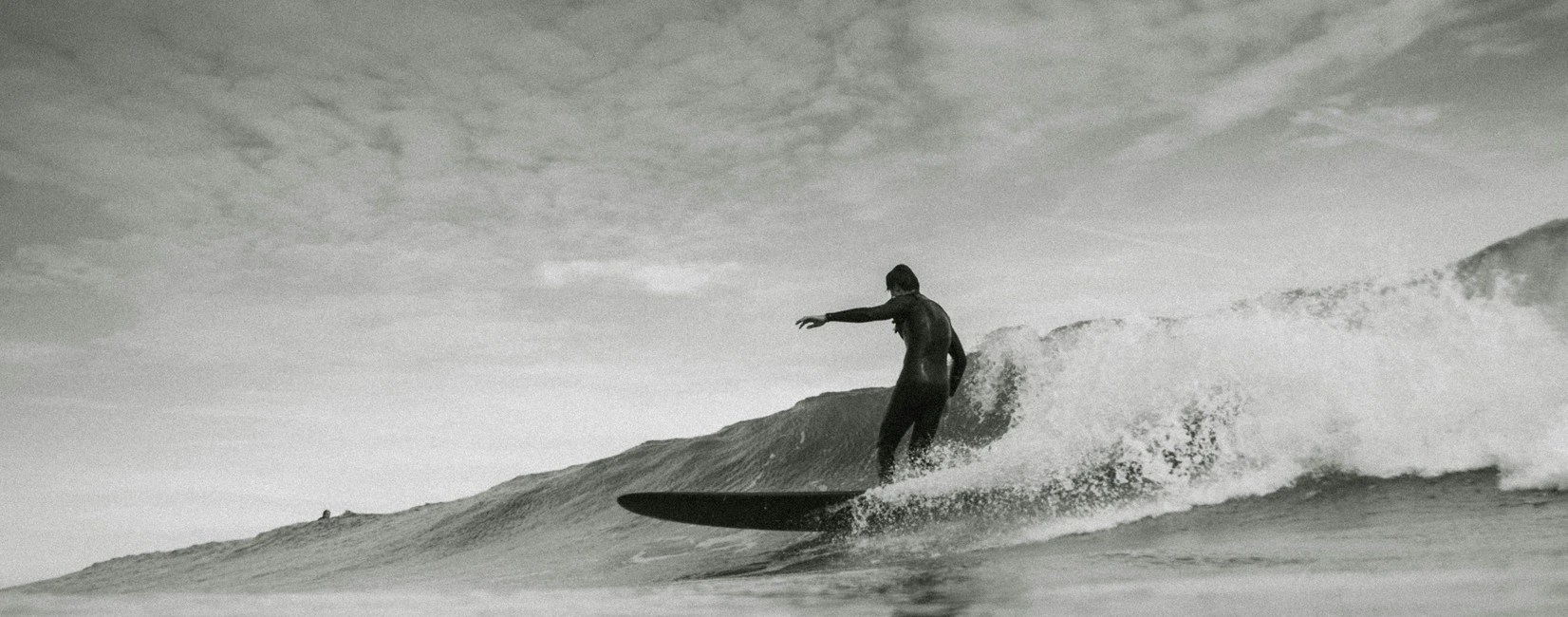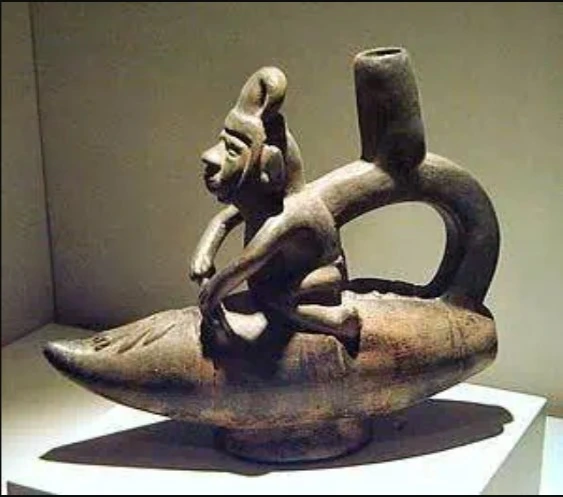


Surfing originated independently in various cultures such as Peru, Polynesia, and West Africa, where people rode waves thousands of years ago. Bodysurfing was the first form, until in Hawaii standing up on a board became popular, shaping modern surfing. Today, this practice connects people worldwide through a shared passion for the waves and the spirit of the ocean.
Archaeologists have discovered that wave-riding on reed boats dates back to pre-Inca cultures approximately 3,000–5,000 years ago. The Moche culture used the ‘caballito de totora’ (little totora reed horse), with evidence around 200 A.D.. Jesuit missionary José de Acosta documented Inca surfing in his 1590 publication Natural and Moral History of the Indies:
“Seeing them fish at Callao in Lima was great amusement for me, for they were many and each on a small reed boat, cutting through the sea waves like Tritons or Neptunes painted over the water.”
To this day, caballitos de totora are still used by local fishermen and can also be ridden by tourists for recreation.

Image of caballito de totora source
West Africans (e.g., Ghana, Ivory Coast, Liberia, Senegal) and Central West Africans (Cameroon) independently developed wave-riding skills.
By the mid-1640s A.D., Michael Hemmersam described surfing on the Gold Coast:
“Fathers tie their children to boards and launch them into the water.”
In 1679 A.D., Barbot recorded surf-riding among children in Elmina, Ghana:
“The children of Elmina learned to ride on pieces of boards or small bundles of reeds strapped under their stomachs, which made a fine sight for onlookers.”
James Alexander also noted surfing in Accra, Ghana, in 1834 A.D.:
“From the shore one could see children swimming in the sea with light boards under their stomachs. They waited for a wave and rode it like a cloud. But they told me that sometimes sharks would attack them from behind the rocks.”
Finally, Thomas Hutchinson described surfing in southern Cameroon in 1861:
“Fishermen moved about in small craft ‘no more than six feet long, fourteen to sixteen inches wide, and four to six inches deep.’”
The art of surfing, called he‘e nalu (“wave sliding”) in Hawaiian, was recorded by Joseph Banks aboard HMS Endeavour during Captain James Cook’s first voyage at Tahiti in 1769.
“Their chief sport was performed on the stern of an old canoe. Facing the wave’s breaker, one or two would enter, propelled with incredible speed, sometimes nearly to the shore...”
Kahalu‘u Bay was the site of an ancient surf temple. Surfing was central to ancient Polynesian culture, predating European contact. The chief (Ali‘i) was traditionally the best surfer, with the finest board crafted from the best wood. The ruling class had exclusive beach and board access, while commoners could gain prestige through skill.
In Tahiti and Samoa, surfing was popular and part of warrior training. Warriors paddled out to big waves, then surfed back. Canoes often accompanied surf gatherings, alternating between canoes and surfboards, followed by fishing.
European residents and visitors later documented and photographed Samoans surfing on simple boards and canoe hulls. Samoans called surfing fa‘ase‘e or se‘egalu. Edward Treager noted Samoan surf terminology. Oral tradition also records surfing in Tonga, where King Taufa‘ahau Tupou IV surfed in his youth—though some sources say he began in the 1960s on a board gifted by Duke Kahanamoku.
Hawaiians called the art he‘e nalu, “wave sliding.” Ritual prayers to the gods preceded entering the ocean for protection. If waves were poor, surfers invoked the kahuna (priest) for a surf prayer. Before entering the water, a priest also oversaw a spiritual surfboard-building ceremony for the chiefly class.
Surfers selected one of three trees—koa (Acacia koa), ʻulu (Artocarpus altilis), or wiliwili (Erythrina sandwicensis)—offered fish to gods, then hired skilled artisans to carve, color, and finish the board.
There were three main board types:
Elite surfers, including chiefs and warriors, earned respect for skill and mastery of the ocean, calling this art ‘surf.’
Ancient surf sites still popular today include Kahalu‘u Bay and Holualoa Bay.
In the early 20th century, Waikiki Hawaiians revived surfing as a sport linked to real estate development and tourism promotion. ‘Haole’ and Hawaiian cultures clashed on beaches, sometimes violently. Duke Kahanamoku, Olympic medalist and ‘Ambassador of Aloha,’ introduced surfing globally. In 2002, the U.S. Postal Service honored him with a first-class stamp. Jack London wrote about his attempts to surf during a visit. Throughout the 20th century, surfboard design innovations and growing publicity propelled surfing forward.
Surf culture centered in three regions: Hawaii, Australia, and California. The first UK surf film was made in 1929 by Louis Rosenberg after seeing Australian surfers. The 1959 film Gidget, based on Kathy Kohner-Zuckerman’s life, propelled surfing from underground to mainstream. B-movies and surf music by The Beach Boys and The Surfaris shaped early surf imagery; the 1980s brought new portrayals like Jeff Spicoli in Fast Times at Ridgemont High.
Surfing at Ormond Beach, Oxnard, California, in 1975.
The 1962 Surfin’ Safari album notes by The Beach Boys humorously defined surf as a terrifying sport for those with no respect for life or physical safety.
“For those unfamiliar with the latest fad sweeping southern California’s sunny Pacific coast, here is the definition of ‘surf’: a water sport where participants stand on a floating wooden board, similar to an ironing board, and attempt to remain erect while hurtled toward shore at frightening speeds.”—Surfin’ Safari liner notes, 1962.
Despite media caricatures, true surf culture evolved quietly: from 1960s fashions to the late ’60s–’70s shortboard revolution, the colorful hotdogging of the ’80s, and the epic professional era of the ’90s led by Kelly Slater, the ‘Michael Jordan of surfing.’ Professional contests began in 1975, and that same year Margo Oberg became the first female professional surfer.
Source: Historical surf information adapted from Wikipedia’s Surf history. Wikipedia content may be edited by multiple contributors.
